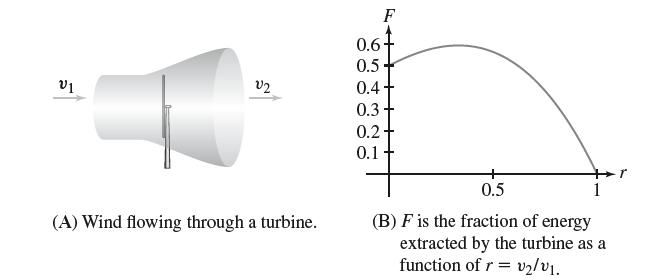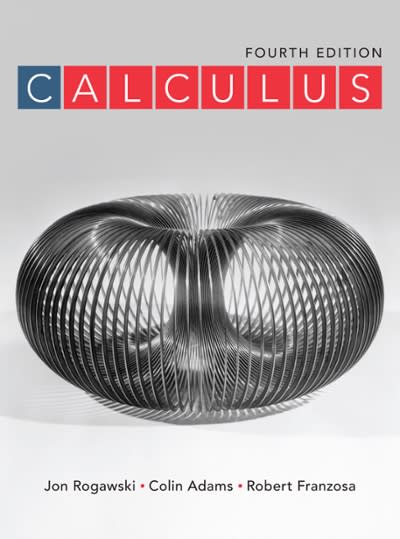In 1919, physicist Alfred Betz argued that the maximum efficiency of a wind turbine is around 59%.
Question:
In 1919, physicist Alfred Betz argued that the maximum efficiency of a wind turbine is around 59%. If wind enters a turbine with speed v1 and exits with speed v2, then the power extracted is the difference in kinetic energy per unit time:

where m is the mass of wind flowing through the rotor per unit time (Figure 22). Betz assumed that m = ρA(v1 + v2)/2, where ρ is the density of air and A is the area swept out by the rotor. Wind flowing undisturbed through the same area A would have mass per unit time ρAv1 and power P0 = 1/2 ρAv31. The fraction of power extracted by the turbine is F = P/P0.
(a) Show that F depends only on the ratio r = v2/v1 and is equal to F(r) = 1/2 (1 − r2)(1 + r), where 0 ≤ r ≤ 1.
(b) Show that the maximum value of F, called the Betz Limit, is 16/27 ≈ 0.59.
(c) Explain why Betz’s formula for F is not meaningful for r close to zero. How much wind would pass through the turbine if v2 were zero? Is this realistic?
Figure 22

Step by Step Answer:






